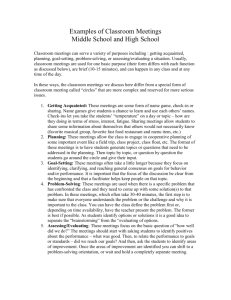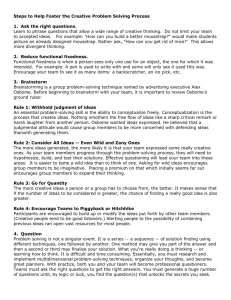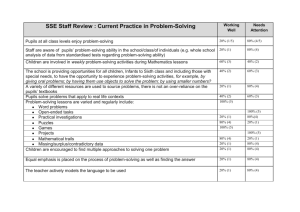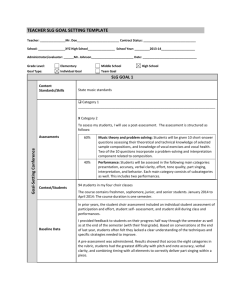Problem-solving - Department of Education and Early Childhood
advertisement
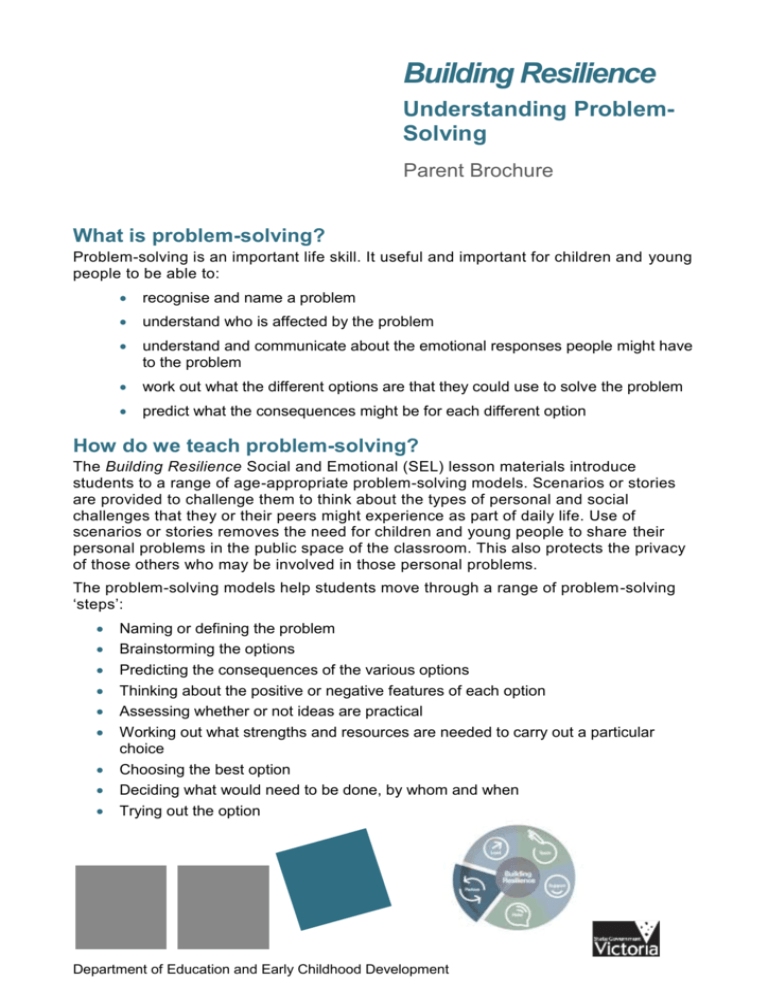
Building Resilience Understanding ProblemSolving Parent Brochure What is problem-solving? Problem-solving is an important life skill. It useful and important for children and young people to be able to: recognise and name a problem understand who is affected by the problem understand and communicate about the emotional responses people might have to the problem work out what the different options are that they could use to solve the problem predict what the consequences might be for each different option How do we teach problem-solving? The Building Resilience Social and Emotional (SEL) lesson materials introduce students to a range of age-appropriate problem-solving models. Scenarios or stories are provided to challenge them to think about the types of personal and social challenges that they or their peers might experience as part of daily life. Use of scenarios or stories removes the need for children and young people to share their personal problems in the public space of the classroom. This also protects the privacy of those others who may be involved in those personal problems. The problem-solving models help students move through a range of problem-solving ‘steps’: Naming or defining the problem Brainstorming the options Predicting the consequences of the various options Thinking about the positive or negative features of each option Assessing whether or not ideas are practical Working out what strengths and resources are needed to carry out a particular choice Choosing the best option Deciding what would need to be done, by whom and when Trying out the option Department of Education and Early Childhood Development Three problem-solving models: There are three problem-solving models that are explored through the SEL lesson materials: What can parents and carers do? Think about the way you respond to problems in your day-to-day life Consider how you model problem-solving within your family Consider the language you use to assist your children to develop their ability to articulate when they have a problem Create regular or structured opportunities to talk through problems and to assess the outcomes of various choices Roads and Roundabouts The image of a roundabout is used to show that when there is a problem there can be different ways to try and solve it. In the centre of the roundabout, name the issue or problem On each exit road list a different option or idea At the destinations: write/discuss the consequences of each option or idea Students are given a scenario or story and asked to identify the different options and ideas and imagine the consequences before they decide which destination they will choose. They take thinking time as they go around the roundabout. The Flower The image of a flower is used to show when there is a problem there can be different ways to try and solve it. On the stem name the problem In the petals list the possible options or ideas for trying to solve the problem, one on each petal In the centre of the flower write the chosen option or idea Students are given a scenario or story and asked to think and talk about the different options or ideas before they decide which one to choose. The Problem Tree Students are given a scenario or story then asked to draw a tree and present the following: On the trunk name the issue or problem In the roots list causes of the problem On the branches list possible options or ideas for a solution On the leaves write the possible consequences of the chosen option or idea The ‘problem tree’ is used as a thinking tool to explore a problem and to think through the options or ideas before making a choice about what to do. Three problem-solving models: Useful links SAFEMinds: http://www.education.vic.gov.au/school/parents/health/Pages/mentalhealth.aspx Bullying: Bully stoppers www.education.vic.gov.au/about/.../bullystoppers/ Bullying. No way! https://fuse.education.vic.gov.au/secondary/pages/View.aspx?id Cybersmart https://fuse.education.vic.gov.au/pages/View.aspx?id=4e59b848 For further information, references and the evidence base, please see the Building Resilience in Children and Young People literature review (hyperlink) Three problem-solving models:




